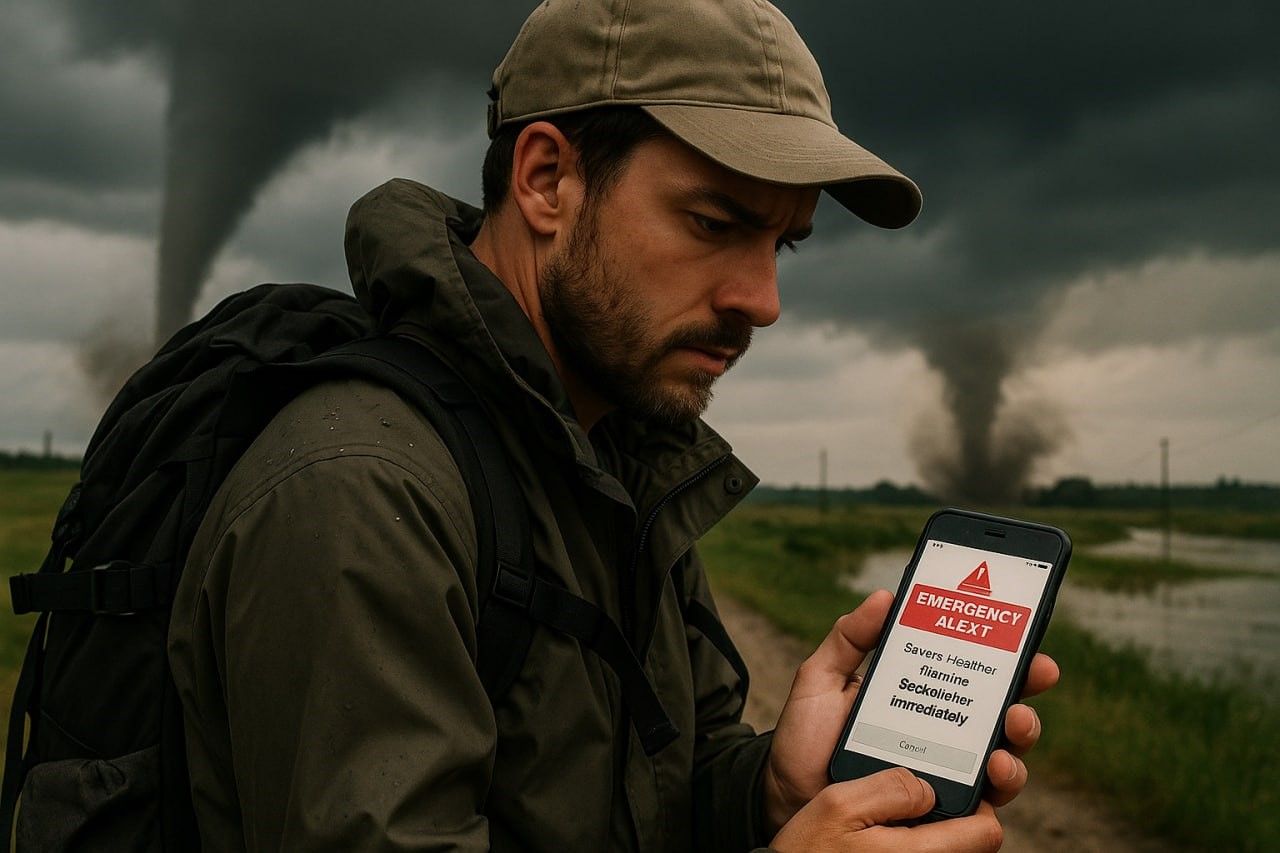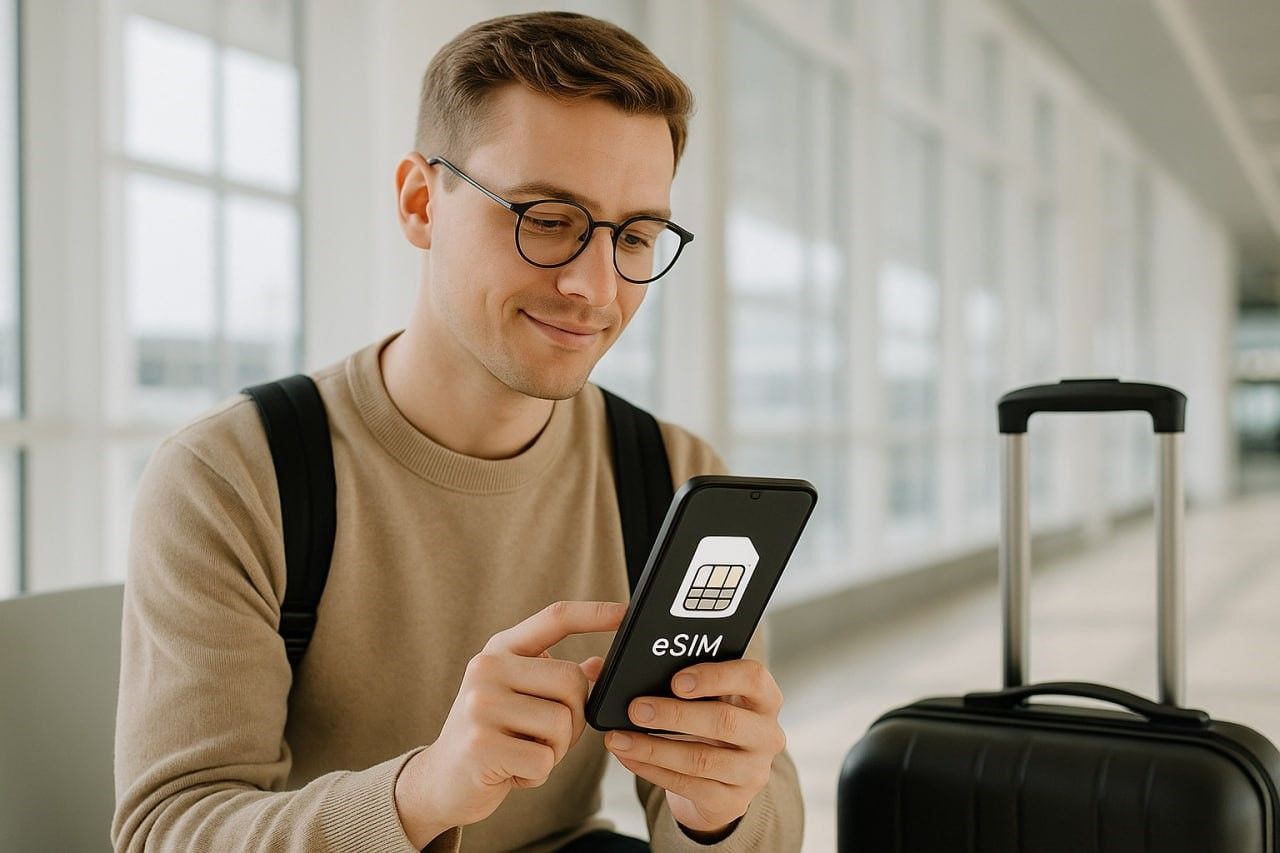When disaster strikes during your travels, having reliable mobile data can mean the difference between panic and safety. An eSIM gives you instant access to local networks, emergency updates, and communication channels — no physical SIM swap required.
Ready to stay prepared on your next trip? Check out flexible Yoho Mobile eSIM plans and stay connected wherever you go.

Why Connectivity Matters in a Crisis
When you’re abroad and a natural disaster occurs — an earthquake, flood, or wildfire — your ability to access the internet becomes your lifeline. From receiving real-time safety alerts to finding the nearest embassy, staying connected helps you act fast.
Traditional roaming often fails during emergencies due to overloaded networks or limited access. That’s where an eSIM becomes crucial. With an eSIM for emergencies, you can instantly switch carriers or access data from a functioning network without waiting in lines or relying on physical stores.
What Is an eSIM and Why It’s Vital During Disasters
An eSIM, or embedded SIM, is a digital SIM that lets you activate a mobile plan without a physical card. You simply scan a QR code, and you’re online within minutes. This flexibility becomes essential when disaster conditions limit mobility or when local stores are closed.
During the 2023 Turkey earthquake, many travelers found themselves disconnected after losing their SIM cards or local service. Those with eSIMs could immediately switch to alternate data providers, contact family, or use emergency apps like Google Maps and WhatsApp without delay.
Key Benefits of Using an eSIM for Emergencies
- Instant carrier switching: Move to another network if one fails.
- No physical access needed: Activate from anywhere using a QR code.
- Global compatibility: Works in most modern smartphones and tablets.
- Multiple profiles: Keep a backup plan ready in case your main line is affected.
- Secure communication: Avoid public Wi-Fi and use encrypted mobile data.
If you’re traveling to a disaster-prone region like Japan, the Philippines, or Turkey, investing in an eSIM is one of the smartest travel safety tips you can follow.
How an eSIM Keeps You Connected When It Matters Most
Disasters can strike at any moment — earthquakes in Turkey, hurricanes in the Caribbean, or floods in Southeast Asia. When infrastructure breaks down, an eSIM ensures your phone can still connect to the most stable network available.
Here’s how it helps you stay safe:
-
Access real-time alerts
Governments and organizations send emergency broadcasts via mobile data. With an active eSIM, you’ll receive location-based warnings instantly. -
Find nearby shelters or embassies
Use GPS-enabled apps like Google Maps, offline navigation tools, or embassy locators. -
Contact family and emergency services
Through encrypted apps like Signal or WhatsApp, you can send updates even if traditional calls fail. -
Avoid local network overloads
eSIMs let you switch to another provider in seconds if one carrier’s network collapses. -
Stay informed with verified information
Access official updates from sources like the GSMA Disaster Response Program or local news sites.
By maintaining an active eSIM profile, you safeguard your ability to communicate when physical SIMs, ATMs, or local offices may be inaccessible.
Setting Up an eSIM for Travel Safety
Setting up an eSIM before your trip ensures you’re ready for unexpected emergencies. Follow these easy steps:
-
Choose a trusted provider
Platforms like Yoho Mobile offer global and regional data plans, giving you flexibility in more than 190 countries. -
Check device compatibility
Make sure your phone supports eSIM. Most newer iPhones, Google Pixels, and Samsung Galaxy models do. -
Scan and activate your plan
Once you receive your QR code, open your phone settings and scan it to activate your plan. -
Keep multiple plans stored
Store a backup eSIM profile in case your main data plan goes offline. -
Download emergency apps
Install apps like Red Cross Emergency, Google Translate, and offline maps — they work even with limited data.

Ready to feel safer on the road? Get your Yoho Mobile eSIM plan today and travel confidently knowing you’re connected wherever you go.
Real-Life Stories: How eSIMs Saved Travelers During Emergencies
- Turkey Earthquake, 2023: Tourists with eSIMs accessed local carrier data while physical networks were down. Many used WhatsApp and Telegram to share their locations with rescue teams.
- Philippines Typhoons: Travelers activated backup eSIMs to check evacuation routes and contact embassies when cell towers failed.
- California Wildfires: Remote workers used international eSIMs to stay online and coordinate relocations after power outages.
These examples highlight that staying connected isn’t a luxury — it’s a travel safety essential.
How eSIMs Improve Emergency Communication Abroad
During crises, communication networks often prioritize emergency services, leaving standard users offline. However, travelers using global eSIM plans can switch to functioning local carriers, ensuring data continuity.
Top Advantages for Emergency Communication
-
No reliance on local SIM shops
If roads are blocked or cities shut down, you can activate new plans digitally. -
Multi-network support
eSIMs connect to multiple local providers — improving your chances of staying online. -
Flexible data management
Monitor usage through your device settings and top up online. -
Peace of mind for families
Loved ones can reach you without interruption, reducing panic during uncertain times.
Whether you’re in Istanbul, Tokyo, or Mexico City, having an eSIM plan gives you confidence to navigate any situation — even when Wi-Fi disappears.
Additional Travel Safety Tips Beyond eSIMs
While an eSIM for emergencies is your first line of defense, combine it with smart travel habits for complete protection.
- Share your itinerary: Let family or friends know your travel route and hotel info.
- Keep offline maps: Download them before trips to earthquake- or storm-prone zones.
- Backup important documents: Store copies of passports and IDs in secure cloud storage.
- Carry a power bank: Ensure your phone remains charged for emergency communication.
- Stay calm and verify news: Rely on trusted sources like ReliefWeb and local government apps.
By combining these practices with eSIM preparedness, you enhance your travel safety in every situation.
Quick FAQs About eSIMs and Emergency Travel
Can I activate an eSIM after a disaster starts?
Yes, if you have Wi-Fi or another data connection, you can activate and switch carriers instantly.
Do eSIMs work if the internet is down?
They rely on mobile networks, so if one carrier fails, you can switch to another still functioning provider.
Are eSIMs secure for emergency communication?
Absolutely. Data transmission is encrypted, and you avoid risky public Wi-Fi networks.
Which countries support eSIMs for travelers?
Over 190 countries now support eSIM connectivity — including Turkey, Japan, and Italy.
How can I choose the best plan for emergencies?
Pick a provider offering multi-country coverage and instant activation, like Yoho Mobile.
Conclusion
Natural disasters can strike anytime, but preparation makes all the difference. With an eSIM, you gain the flexibility and reliability to stay informed, reachable, and in control no matter what happens.
Protect yourself on every journey — get your Yoho Mobile eSIM now and travel with confidence, knowing you’ll always stay connected when it matters most.
